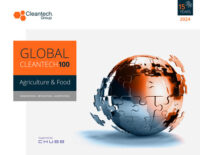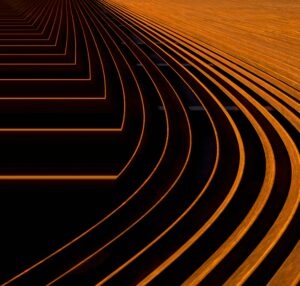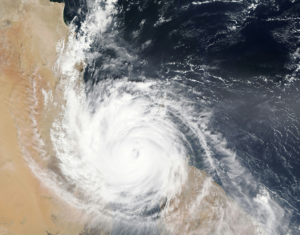Aquaculture Innovation Trends and Challenges: Part 1
Setting the Scene
The global population is rapidly rising, and with it the global appetite for fish. From 1990 to 2018 the world saw a 122% rise in fish consumption (FAO, 2020) outstripping growth of all other proteins. Global protein demand is expected to double by 2050, with seafood products accounting for a significant percentage. Concern over limited and increasingly over-taxed agricultural resources has governing bodies turning to the oceans to supply their growing populations with protein, while climate and health conscious consumers view to fish as a healthy, sustainable alternative to red meat or poultry.
Global fish production is under intense strain to respond to the growing demand. The overall supply of wild-caught fish plateaued in the early 1990s and has remained stable ever since (Atlantic Sapphire, 2021) and wild-caught fisheries are increasingly unsustainable and overfished. With wild-caught production stagnated, meeting the global demand for fish falls largely upon fish farms. The aquaculture industry, however, is not scalable to sustainably supply the increasing global demand. National governments and international organizations, concerned with national and global food security, are promoting sustainable development and scaling in aquaculture to increase supply as well as funding innovation to optimize production and address sustainability and environmental challenges.
Basic Aquaculture Methods and Present-day Challenges
Aquaculture methods vary by target species and geography. Overall, the production of finfish (true fish – excluding crustaceans, bivalves, and other marine species) dominates global aquaculture (FAO 2020). Asia is by far the largest contributor to global agriculture producing 92% of the world´s farmed marine species with China alone accounting for 57% (NOAA, 2020).
The basic types of fish farms and their corresponding benefits and challenges are explained below:
Ponds
Pond aquaculture—the cultivation of marine species in earthen ponds—is the most common aquaculture technique worldwide. Requiring minimal technology and maintenance, this technique is particularly common in coastal Asian countries and can play a significant role in food security, economic development, employment rates, and poverty alleviation. However, pond aquaculture poses significant sustainability issues including groundwater pollution, diseases that can be spread to other ecosystem members, depletion to wild shrimp stock, and destruction of habitats in particular coastal mangroves (World Wildlife Fund).
Net Pens
Net-pens are enclosed floating cages or pens made of meshing or nets through which water flows freely. Net-pens are usually located in coastal waters and allow fish to benefit from natural ocean currents to deliver oxygen and remove waste. As net-pens do not separate farmed fish from their environment, fish waste, feed, and antibiotics pose environmental risks to local ecosystems. Additionally, net pens are prone to damage and semi-enclosed pens can tip, resulting is mass-escape events, disrupting local ecosystem balance and threatening wild stock. High density in net pens also present fish welfare challenges such as parasites, disease, excessive antibiotic and vaccine usage, and breeding deformities.
Onshore Systems
Onshore aquaculture facilities include raceways or flow-through facilities and fully closed recirculating aquaculture systems (RAS). Raceways are narrow, shallow canals with high water flow rate developed for freshwater species and those that require constant water flow. RAS are enclosed tanks that allow for a water recycling, high density production, and more control and monitoring of environmental factors and fish health. RAS facilities are complex, requiring precise management of water filtration and purification, waste removal, and oxygen content, among other markers.
Animal wellbeing and food safety are two key challenges for the aquaculture sector. Strategies to combat disease and parasites such as sea lice include chemical treatment, vaccination, and administration of antimicrobial treatments. Public concern over over-use of vaccines, chemicals, and antibiotics is compounded by the threat of antibiotic-resistant pathogens spread from farmed fish to wild stock and humans.
Innovation Trends – Recirculating Aquaculture Systems (RAS) and Seaweed
RAS facilities address several environmental challenges by fully separating farmed fish from the larger ecosystem, eliminating environmental degradation and threats to wild stock. The highly controlled atmosphere of RAS allows for close monitoring and treatment of health issues as well as higher stock densities. Additionally, RAS facilities introduce location flexibility to the aquaculture industry, a key sustainability factor. RAS facilities can provide fresh seafood to regions with limited or no natural access, improving food security and reducing transport-related carbon emissions. RAS innovators are developing AI and software solutions for the optimization and automation of RAS management (ReelData, Canada), turnkey systems design (AquaMaof, Israel), and fully integrated genetics, breeding, and cultivation of high-value species (The Kingfish Company, Netherlands). Looking forward we expect to see innovators addressing the energy-intensity of current RAS facilities, efficient water use, adaptation of facilities to suit new species, as well as multitrophic systems.
Seaweed cultivation and processing into a myriad of products is another area of innovation and increasing investment. The potential of seaweed as a fast-growing and sustainable source of biomass has inspired innovators to develop fertilizers and crop-stimulants (Primary Ocean, United States), feed additives (CH4 Global, Australia) food and feed ingredients (Cascadia Seaweed, Canada), and biofuels, to name but a few. The young industry is faced with scaling and regulatory challenges, but corporate partnerships to develop and bring seaweed-based food ingredients to market, national and international development and scaling initiatives, and increasing commercialization of feed and food products suggest rapid industry growth.
The next two parts of this series will include closer looks at both RAS and Seaweed – keep an eye out for these insights, to be released later this month.



